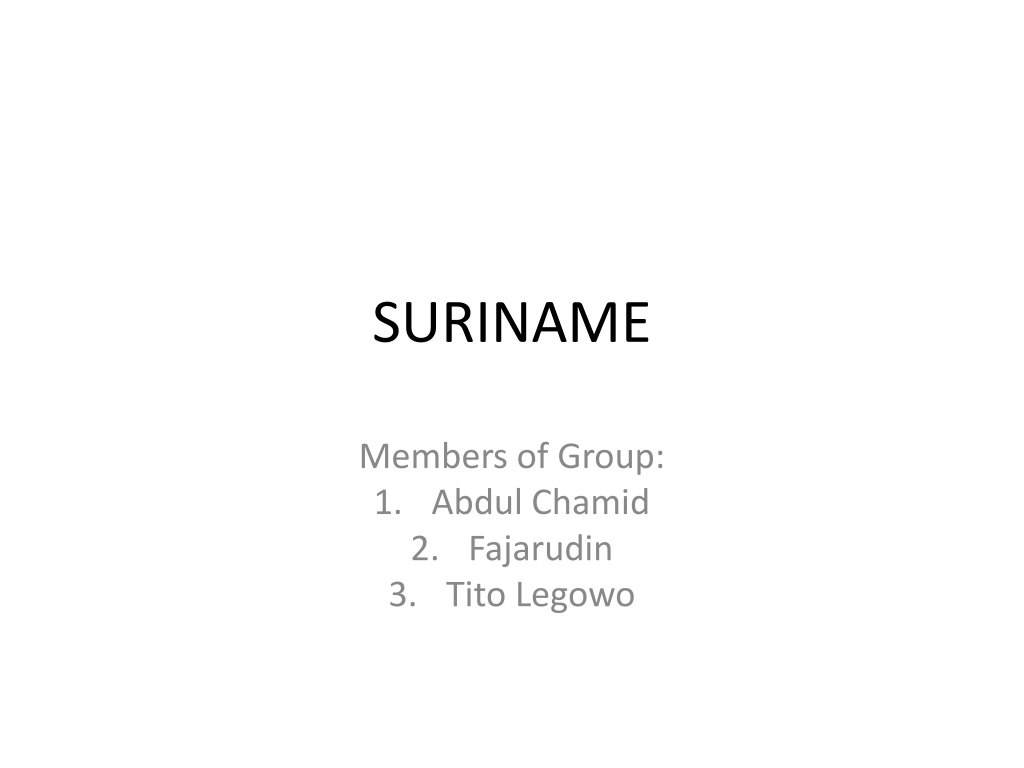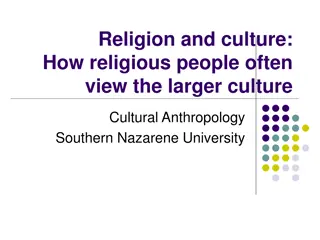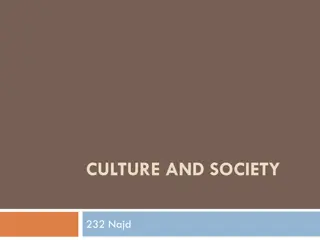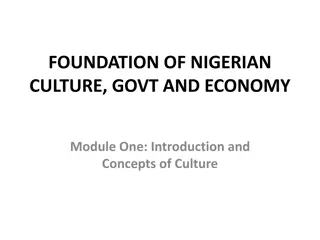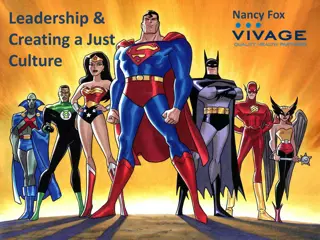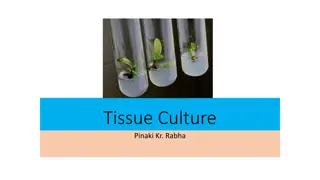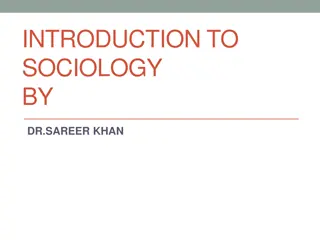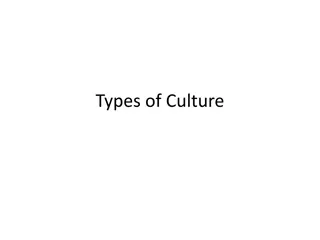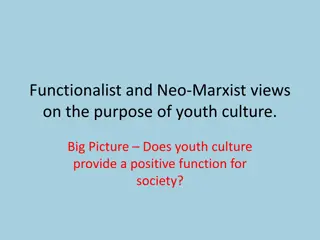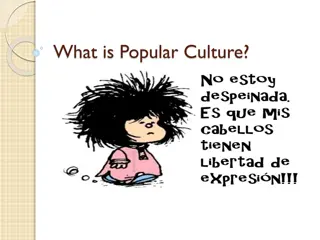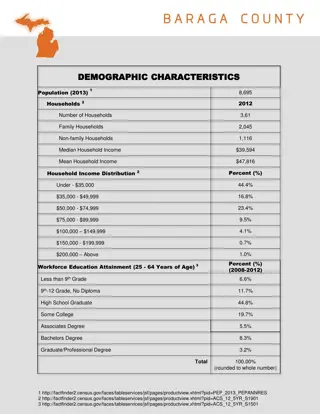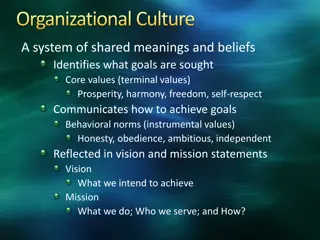Overview of Suriname: People, Culture, and Government
Suriname, located on the northeastern Atlantic coast of South America, is a diverse country with a population of approximately 566,846. The country is known for its rich ethnic composition, with significant groups including East Indians, Maroons, Creole/Afro-Surinamese, Javanese, and others. Official language is Dutch with recognized regional languages. Suriname has a mix of religions, primarily Christian, Hindu, Muslim, and followers of traditional beliefs. The educational system is well-developed, with an adult literacy rate of about 89.6%.
Download Presentation

Please find below an Image/Link to download the presentation.
The content on the website is provided AS IS for your information and personal use only. It may not be sold, licensed, or shared on other websites without obtaining consent from the author. Download presentation by click this link. If you encounter any issues during the download, it is possible that the publisher has removed the file from their server.
E N D
Presentation Transcript
SURINAME Members of Group: 1. Abdul Chamid 2. Fajarudin 3. Tito Legowo
Location Capital and largest city: Paramaribo 5 50 N 55 10 W On the northeastern Atlantic coast of South America. It is bordered by French Guiana to the east, Guyana to the west and Brazil to the south.
District Suriname is divided into 10 districts 1. Paramaribo 2. Commewijne 3. Coronie 4. Marowijne 5. Nickerie 6. Para 7. Brokopondo 8. Saramacca 9. Sipaliwini 10. Wanica
About Country Government System: Constitutional Republic Anthem: God zij met ons Suriname Motto: Justitia Piedas Fides Keadilan Kesederhanaan Loyalitas
Population Total Population(2013 estimate) 566,846 About 90% of people established in Suriname have ancestors who come from other countries and regions. Ethnic groups 27.4% East Indian 21.7% Maroon 15.7% Creole/Afro-Surinamese 13.7% Javanese 13.4% Mixed 8.2% others
Languages Official languages Dutch Recognised regional languages Sranan Tongo Creole Caribbean Hindi Javanese
Religion Religion in Suriname is characterized by a range of religious beliefs and practices due to its ethnic diversity. According to the most recent census: 48.4 percent is Christian (the largest groups being the Catholic Church,Pentecostalism,and the Moravian Church) 22.3 percent is Hindu 13.9 percent is Muslim 1.8 percent is following Winti 0.8 percent is Javanist 2.1 percent follow other faiths (including Jehovah's Witnesses In addition 10.7 percent are Atheist
Education The adult literacy rate is approximately 89.6%. Suriname has an extensive educational system with free schooling compulsory until age 12. The Government and the Roman Catholic and Moravian Churches provide education for kindergarten through secondary school. As a rule, all instruction is in Dutch
Education Many students still attend high schools and universities in the Netherlands. A growing number study in U.S. universities.
Labor about 70% are engaged in services 8.3% in manufacturing 17% in commerce 5.9% in agriculture 7.8% in transport and communications the unemployment rate is 17% The minimum working age is 14
Holiday HOLIDAYS: New Year's Day, 1 January Revolution Day, 25 February Labor Day, 1 May National Union Day, 1 July Independence Day, 25 November Christmas,25 December Boxing Day, 26 December
Culture country without a true national culture Examples: Javanese religious life, ritual meals called slametans commemorate events such as birth, circumcision, marriage, and death Hindia weddings and birthday parties those celebrating a jubilee year also called Bigi Yari Hindia weddings and birthday parties those celebrating a jubilee year also called Bigi Yari All culture had brought by immigrants (multi ethnic)
Social Stratification The class structure is based on income and a lesser degree social position.
Gender Role and Status The Relative Status of Women and Men. Official labor force figures underestimate the participation of women, many of whom are employed in the informal sector. Women also work in subsistence agriculture. Despite the economically independent position of many women within their households, in society in general women cannot claim equal status. The domestic status of women varies. Women are the emotional and economic center of the household (matrifocality) in many Creole groups but are subordinated in traditional patriarchal Hindostani circles.
Marriage,Family,and Kinship In traditional Hindostani families in the agricultural districts, parents still select partners for their children, Weddings can be very lavish. Living together without being married is common but is not acceptable to traditional Hindostani, among whom the bride is expected to be a virgin Although many marriage partners are of the same ethnic group, mixed marriages do take place in Paramaribo
Marriage,Family,and Kinship In the Caribbean family system, female-headed households and the fact that women have children from different partners are accepted Some women practice serial monogamy; it is more common for men to have several partners simultaneously Having a mistress ( buitenvrouw ) is accepted and usually is not shrouded in secrecy Maroon men often have different wives in different villages; those men do, however, have the responsibility to supply each wife with a hut, a boat, and a cleared plot for subsistence agriculture.
